New software and computer-driven fabrication speed production and improve accuracy.
by Bruce N. Wright, FAIA
While CNC (computer numerical control) and 3D digitally driven fabrication have been trumpeted in the design and construction press over the past 10 to 15 years, another revolution has been quietly growing within the architectural fabrics industry. Using computer digital patterning and precision cutting of flexible composites (such as PVC-coated laminates or PTFE-coated polyesters), the digital revolution has transformed the fabrication of awnings, canopies and fabric structures in shops small and large across the world. The tools are enabling even modest-sized companies to handle large-scale projects that before only fabricators of wood paneling, precast concrete units or CNC manufactured metal cladding systems could claim.
Many of the advancements in computer patterning have evolved out of the software developed by structural engineers in Europe and the U.S., used to help with analyzing and designing more and more complex structural designs. These have been pushed forward by innovative architects demanding design and fabrication capabilities that could allow architects like Frank O. Gehry or Zaha Hadid, noted for their highly sculptural buildings made from thin metal plates or FRP composites, to realize their visions. The revolution in finite analysis structural engineering has opened up vast opportunities for free expression in fabric structures. Most standard structural analyses use statics, taking into account the stress and strain of materials under dead and live loads. The more dynamic finite analysis programs come much closer to true tension structure design forms.
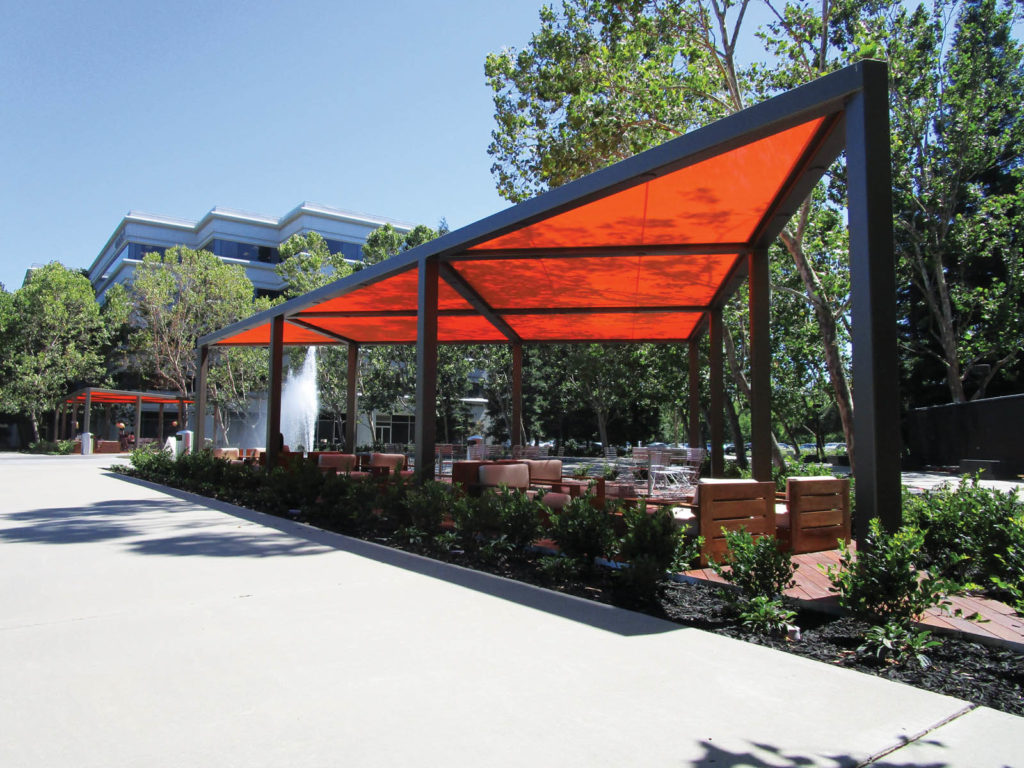
Some of this innovation also can be attributed to the migration of human-scale pattern making in fashion and clothing, as the digitizing of the human body translated to CNC cutting and economizing of material resources (the tight “nesting” of shapes on flat pieces of fabric to minimize waste) are applied with machine precision.
Another inspiration has come from the shaping and cutting of sails for high-performance sailboat racing. North Sails, in the 1990s, developed advanced computer patterning and cutting for customized high-end lightweight sails for the America’s Cup race by using Kevlar® and Nomex® fibers laminated between sheets of transparent Mylar®. North’s 3D modeling software has been adapted to tension structure fabric patterning. Eastman Machine Co., Buffalo, N.Y., acquired this technology in 1995 and incorporated it into its digital cutting machines.
Long history of innovation
What is different in the past 10 years or so is the advancement of automation technology that has improved the speed, accuracy and reliability of fabric structure design and fabrication as never before.
Some of these automation leaders evolved from tool makers of the previous generation. Eastman, for example, created motorized cutting shears for the apparel industry more than 130 years ago, giving manufacturers the ability to cut simultaneously through dozens of layers of fabric to save time. These manually guided tools were designed, as the company website says, “for wool, cottons, denim, foam, canvas, and leather,” and since the advent of synthetic fibers and textiles in the 1950s for “nylon, polyester and modern technical textiles.” Eastman has updated its complete line of cutting equipment with computer aided automation and patterning capabilities. But Eastman has also expanded into the more specialized field of composites that uses high-tensile fibers such as fiberglass, carbon fiber, Nomex and other aramids. These tools require high shear strength and durable cutting capabilities in the growing composites industries of transportation, aeronautics and space, defense, marine, wind energy and now construction.
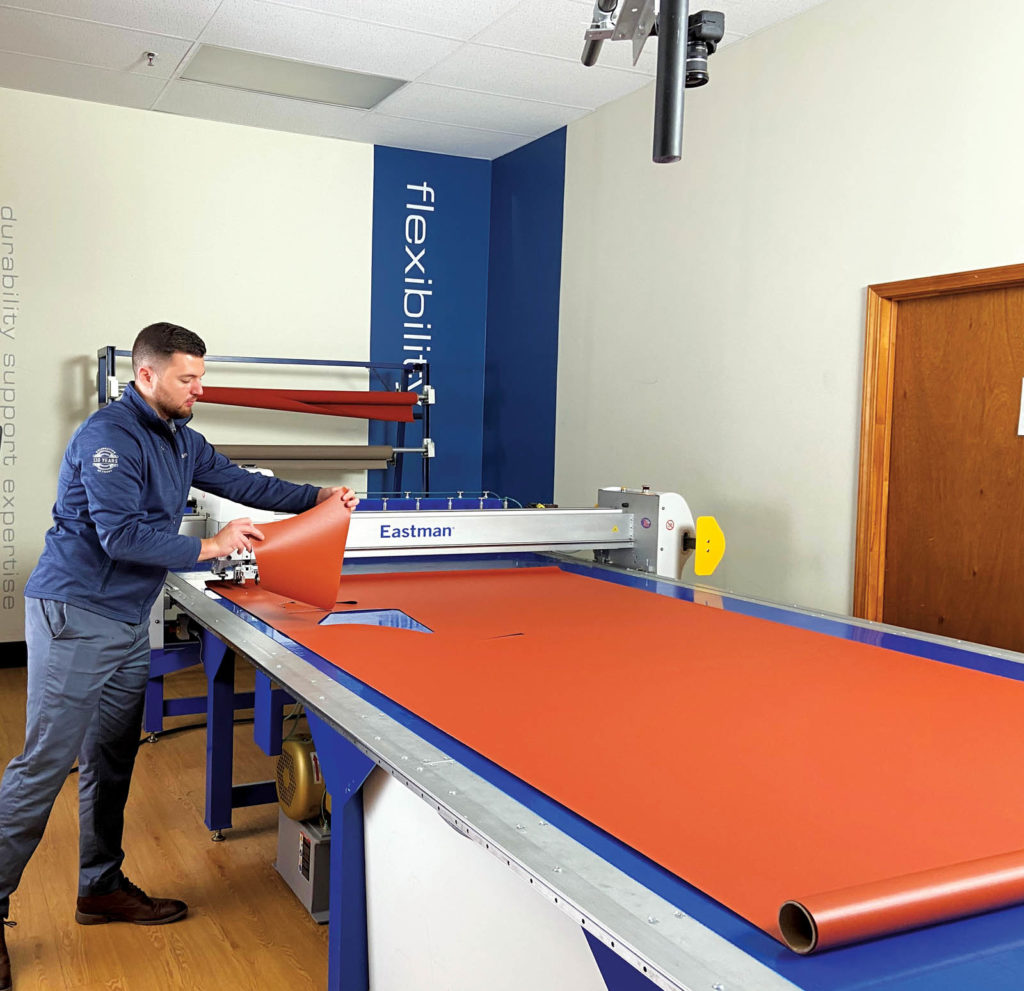
“Our automated cutting equipment has two main areas of business,” says Elizabeth McGruder, Eastman vice president of European sales and marketing. “About 60 percent of our cutting business applies to the composites and technical textile markets.” The advantages, according to McGruder, of using automated cutting equipment are to improve accuracy, speed and optimization of cutting of fabrics and fibers in all markets. Composites, as many architects know, are a rapidly growing area of new building materials and assemblies. Not only are composites lighter than traditional building materials like brick, precast concrete panels and metal cladding, they also are highly durable, and composites can be formed into any shape the designer desires.
Autometrix Inc., Grass Valley, Calif., a cutting tool manufacturer for all manner of fabric materials, tends to focus its machines on the awning, canopy and tent industries with improved reliability and speed in throughput production. This capability is advantageous to big projects greatly appreciated by architects. “With our first contact with an architect,” says Truy Pham, director of global sales for Autometrix, “we want to reassure them that these are not for the canvas shops of a 100 years ago where everything was done by hand or with the old Singer sewing machine. With sophisticated cutting software, we create and measure all the patterns for cutting the fabric that goes into a structure—awning, canopy or similar—that support the fabric skin.” Pham ticks off a list of advantages to using the company’s automated cutting: overall time savings, accuracy, inventory reduction, material savings, error elimination, improved organization and easy pattern creation. “These automated tools are ideal for large jobs,” says Pham, “such as a 10-building project with many similar awnings. It could mean the difference of getting all those awnings to the site in two weeks instead of four weeks using a more conventional fabrication method.”
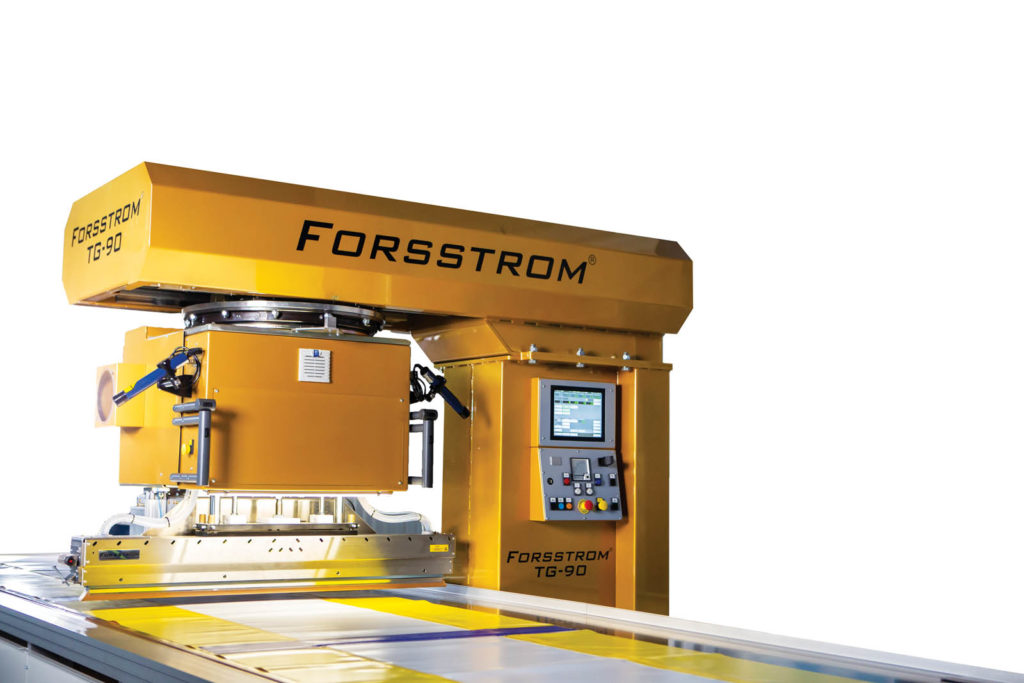
A fusion of technology
Another improved area of fabrication has been the “welding” of synthetic fabrics, a unique field of technology growing out of the development of acrylics, polyesters, vinyl and other thermoplastics, resulting from the chemical revolution after the 1940s and commercial production in the 1950s. Radio-frequency (RF) welding, also called dielectric welding or high-frequency (HF) welding, induces heat using high-frequency electric fields to soften and fuse thermoplastic materials, usually sheets of plastic, that need to be sealed or made waterproof.
In the 1960s, RF welding of polymers became a reliable means of sealing synthetic fabrics made of thermo polymers such as polyester, PVC and polyethylene. There are many companies that make these RF welders, but two stand out for their machines that aid the fabric structures field: Forsstrom HF AB, Lysekil, Sweden, and Miller Weldmaster Corp., Navarre, Ohio.
In the business of RF welding since the 1970s, Forsstrom has perfected its fabric welding machines with adjustable frequency controls that allow for multiple types of polymer welding. Typically, a special machine is made to weld a certain type of thermo polymer, and it can be expensive to have many machines for all occasions. “With our Energy Monitoring Program (EMP) software,” says Mikael Wallin, Forsstrom vice president of marketing and sales, “the machine automatically sets parameters such as pressure, welding time and cooling time to values optimized for the material in question. These settings are based on tool surface, welding material and the machine’s welding effect. Forsstrom is the only company in the industry to offer this program, which radically simplifies and streamlines production through simpler tool changes, improved weld quality and less dependence on the skills of the individual operator.”
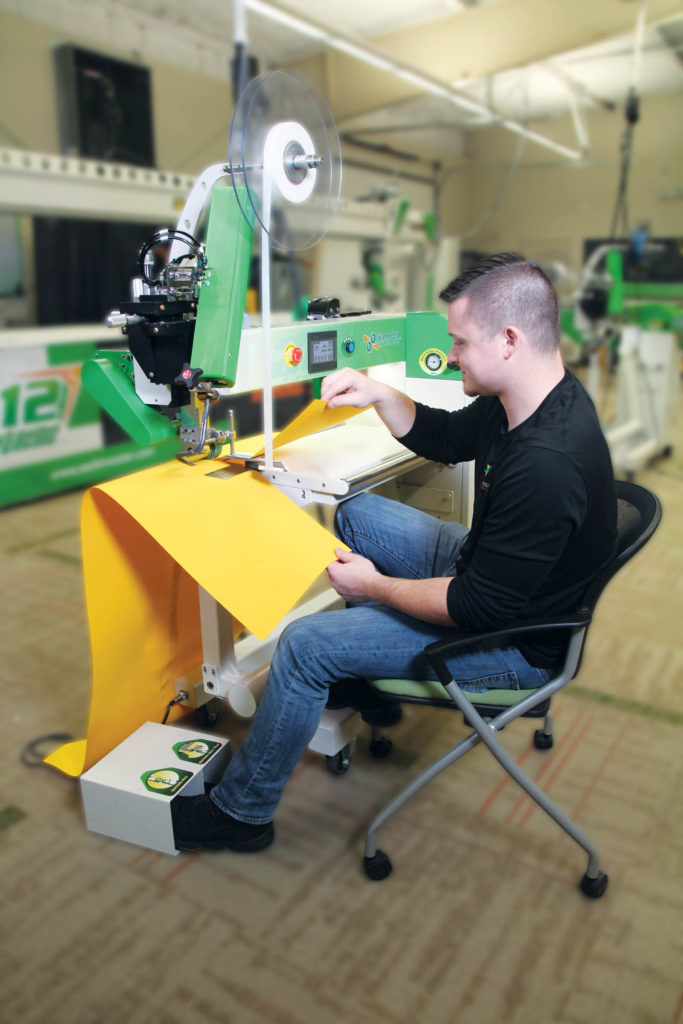
Wallin notes that his company’s HF welding method can produce applications for tensile fabric structures “10 to 15 times faster and will create bonds that are tighter, stronger and more aesthetic compared to traditional bonding methods.” In the past, many fabric membranes have been anchored to supporting steel supports with corner plates and bolts. “Traditional joining methods are complicated,” says Wallin, “and do not meet shear strength requirements in larger constructions.” Forsstrom’s method produces a more homogeneous bond with the entire surface connected to the membrane.
Miller Weldmaster makes welding machines for acrylic and PVC fabrics of any size operation. These machines have been used for making fabric tents, awnings, sidewall panels for event tents and canopies, and are designed to create extra-long, precise welded seams. Long-lasting seams are especially important when creating the catenary curved edges of tensile structures that contain structural tensioning cables holding the edges in place.
“Fabric welding of these edges is paramount in fabricating a tension shade structure,” says Jeff Sponseller, Miller Weldmaster executive vice president of sales and marketing. He notes that some architectural fabrics cannot be fabric welded without removing some of the protective coatings at the seam that get in the way of the welding parameters. But when they can be applied, “Fabric welding can increase productivity and efficiency in the fabrication process. And it can improve cost savings by not having to have staff labor require any sewing skills. It is a sad, but true situation in the country that sewing is a dying skill set. The automated welding technology compensates for these lack of skills.” Miller Weldmaster also lists a number of the advantages comparable to the others mentioned in this article: improved water resistance of seams, smooth finishes giving a better appearance, faster fabrication and shorter lead times on big projects. ϖ
Bruce N. Wright, FAIA, the former editor of Fabric Architecture, teaches architecture and construction management at Dunwoody College of Technology and is a consultant to architects and designers. He is a frequent contributor to Specialty Fabrics Review and Advanced Textiles Source.

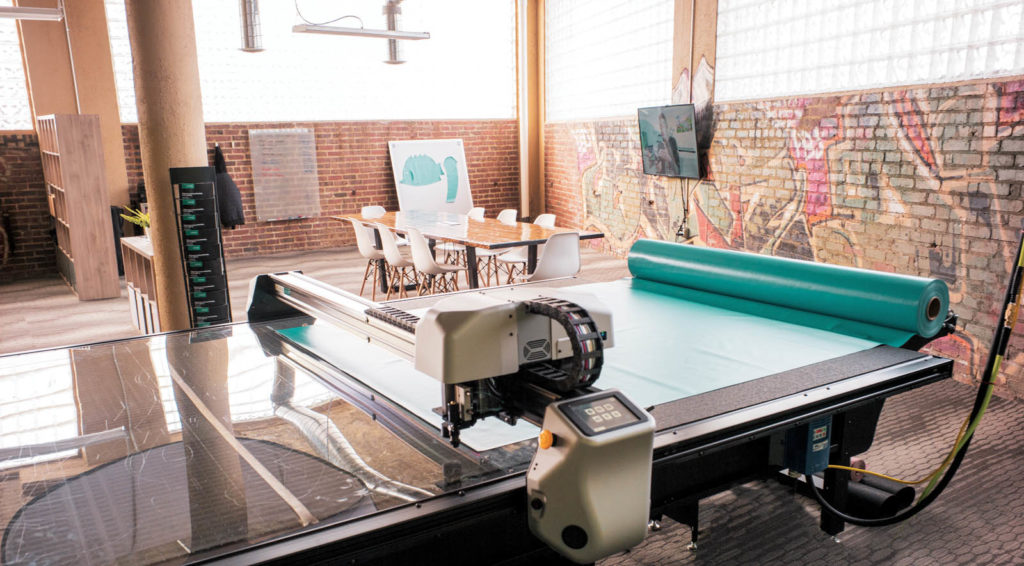
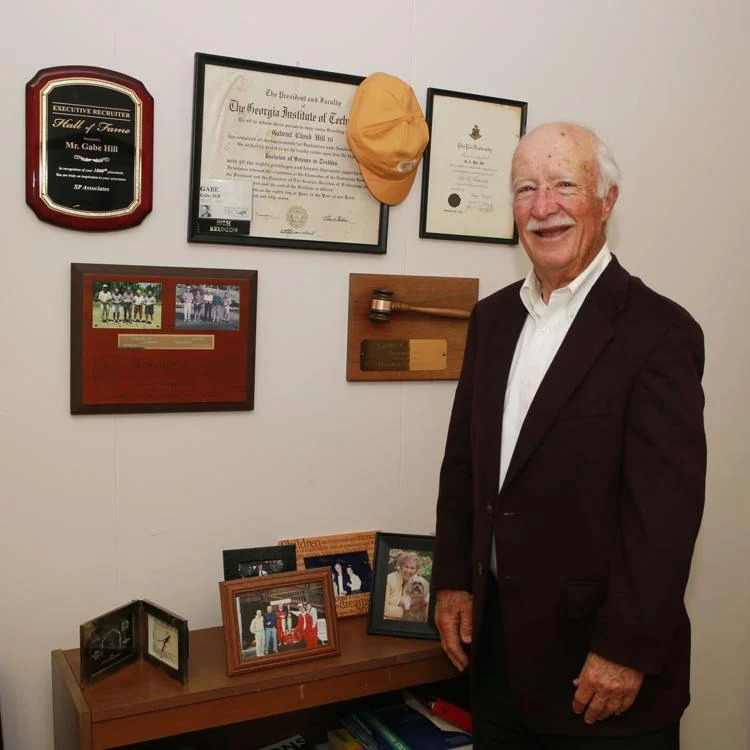
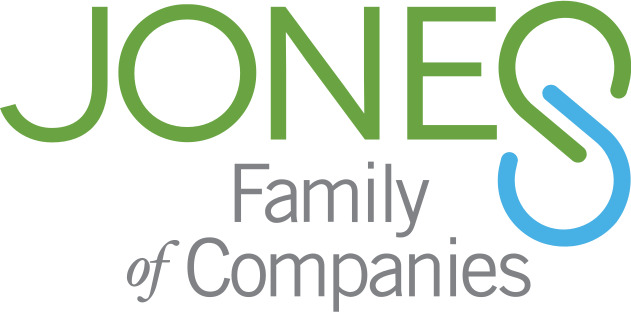




Leave A Comment